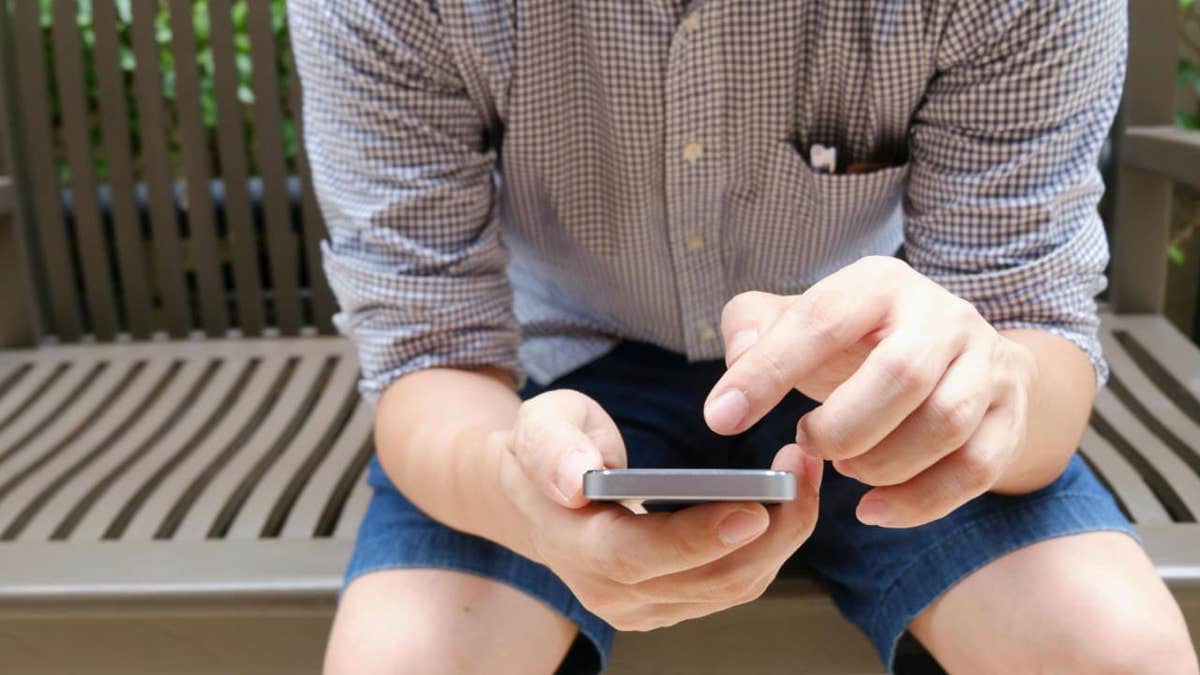Technology
Apple’s next MacBook Pros might have leaked in Russia
/cdn.vox-cdn.com/uploads/chorus_asset/file/25663594/Screenshot_2024_10_07_at_4.37.09_PM.png)
At least two Russian creators have posted videos in which they unbox what appears to be the next base model 14-inch MacBook Pro with an M4 chip. Apple, which hasn’t announced the laptops yet, is rumored to have a launch planned for November.
Over the weekend, Bloomberg’s Mark Gurman pointed to a video posted by the Russian YouTube channel Wylsacom. He points out that the packaging looks the same as the M3 MacBook Pro, down to the wallpaper on the label that Apple tends to change annually.
In the 13-minute video, the host sets up the laptop and runs some Geekbench tests alongside a 2022 MacBook Air. Based on the times and CPU scores shown in the video, these appear to be those benchmarks. Overall, the MacBook Pro shown in the video aligns with expectations of models with spec bumps but no major outward changes.
Then, this afternoon, Gurman highlighted another Russian YouTuber, Romancev768, who also posted a video that they said was of the M4 MacBook Pro. Like the first video, its box has last year’s wallpaper. But this one includes a look at the “About This Mac” screen of the laptop, indicating it has an M4 chip.
Gurman called the potential leak “unprecedented,” a sentiment echoed by leaker ShrimpApplePro, who writes that “some seller” claimed to have 200 MacBook Pros in stock. “This is probably the biggest warehouse leakage I’ve ever seen,” they wrote. ShrimpApplePro had also posted some images last month of apparently leaked 14-inch MacBook Pro packaging:

Technology
Ask Kurt: How does Apple AirTag work, how far can you track?

Apple AirTags have become a popular tool for keeping track of personal belongings, but their functionality and limitations can sometimes be misunderstood. Today, we’re addressing an insightful question from Duncan in Keller, Texas, about the tracking capabilities of AirTags, especially when used with pets and vehicles.
“Hi Kurt, I put an AirTag on my cat. Your article about tracking stolen cars using AirTags suggests you can track a stolen car the same way you can a person you share locations with. I have not found this to be the case. The app will only find the tag if you are within Bluetooth range. I wish this weren’t the case. Am I missing something?” Duncan writes.
This excellent question highlights some common misconceptions about AirTags. Let’s dive into how AirTags work and explore their tracking capabilities and limitations.
A person holding an AirTag (Kurt “CyberGuy” Knutsson)
How an AirTag works
The AirTag operates through Apple’s Find My network, which utilizes the hundreds of millions of other Apple devices around the globe to provide near-perfect tracking of your stuff. The way it works is that whenever an AirTag comes close to an Apple device like an iPhone that’s connected to the Find My network, that device transmits the location information back to the company’s servers, which in turn send that location information data back to the Airtag’s owner.
However, if you lose your AirTag in a remote area with no other Apple devices nearby, you will not be able to track it. AirTags can be tracked using Apple’s Find My network, but the location may be less precise if the AirTag is outside Bluetooth range.
Also, for the best experience, you’ll need a device with a U1 Ultra Wideband chip, which can more accurately determine the distance and direction of signals coming from the AirTag. These devices include the iPhone 11, iPhone 11 Pro and iPhone 11 Pro Max, as well as the iPhone 12, iPhone 12 Mini, iPhone 12 Pro and iPhone 12 Pro Max.
So, while the AirTag can be useful for tracking items within its limitations, it might not always work as expected in all situations.
AirTag showing how to connect to iPhone (Apple) (Kurt “CyberGuy” Knutsson)
IS YOUR AIRTAG ABOUT TO DIE?
The primary issue with using an AirTag as a pet tracker is that the precision finder can sometimes be a bit finicky. If you’ve used your AirTag to track a pet or even a lost pair of iPods, you’ve probably at some point seen the dreaded “Signal is weak, try moving to a different location” message. I’ve encountered this message even when I’m in line of sight with the AirTag in question, but the Find My app consistently refreshes, and I’ve never been led too far astray.
If you let your pet go outdoors or take it for hikes, and it slips out of its harness or collar, an AirTag might not be the best option for reuniting with your furry friend. This is because AirTags rely on nearby devices, such as iPhones, to relay their location to the Find My network. In rural or remote areas, there may not be enough devices around to help locate your pet. AirTags themselves do not form a mesh network or relay the location of other tags. If you are in a busy area, you should be able to track your pet more easily. One of the best parts of using a tracker like an Apple AirTag is that you can turn on lost mode, and if someone else were to scan the AirTag, you can set up a message about contacting you. What a relief, right?
A cat with an AirTag on its collar (Kurt “CyberGuy” Knutsson)
HOW YOUR AIRTAG CAN BE SHARED WITH UP TO 5 OTHER PEOPLE
If you’re looking for a reliable tracker to keep tabs on your pets, consider exploring GPS trackers designed specifically for animals. These devices attach to your pet’s collar and offer real-time tracking with no distance limit, ensuring you can always locate your furry friend. Such trackers are tailored for pet tracking, providing better results than general-purpose trackers. Check out the best pet trackers here.
A person using GPS tracker to find their pet (Kurt “CyberGuy” Knutsson)
HEARTLESS SCAMMERS ARE PREYING ON PEOPLE’S LOST PET ANGUISH
While an Apple AirTag is a great way to find your lost iPhone or iPods, it’s not the best tracking solution for pets due to the range of the Find My network and Bluetooth LE. However, if you want to track a pet, it’s worth looking into the other tracking options available, especially those GPS trackers that are designed specifically for pets. When it comes to AirTags, it’s best to use them for what they are built for: finding lost Apple devices. How have you used AirTags or similar tracking devices and what challenges or successes have you experienced? Let us know by writing us at Cyberguy.com/Contact.
For more of my tech tips and security alerts, subscribe to my free CyberGuy Report Newsletter by heading to Cyberguy.com/Newsletter.
Ask Kurt a question or let us know what stories you’d like us to cover.
Follow Kurt on his social channels
Answers to the most asked CyberGuy questions: New from Kurt:
Copyright 2024 CyberGuy.com. All rights reserved.

Tracking a pet with an AirTag

Alternative trackers to the AirTag

Kurt’s key takeaways
Technology
Nvidia to hold CES 2025 keynote as RTX 5090 rumors swirl
/cdn.vox-cdn.com/uploads/chorus_asset/file/25663050/1078648890.jpg)
Nvidia CEO Jensen Huang will deliver a keynote at CES 2025 in January. The keynote will take place on January 6th at 6:30PM PT / 9:30PM ET, just a day before the Consumer Electronics Show opens its doors in Las Vegas. It comes amid rumors of next-gen Nvidia GPUs appearing early next year.
A source familiar with Nvidia’s plans told The Verge last month that we might hear more about the RTX 50-series at the Consumer Electronics Show in early 2025. Nvidia is an official guest keynote of the Consumer Technology Association (CTA) for this upcoming CES show after the company previously delivered its own “special address” stream at CES 2024 earlier this year.
While Huang will undoubtedly focus on the AI hardware and software that has propelled the company to a $3 trillion valuation, he may well discuss the company’s upcoming desktop GPUs based on the Blackwell architecture.
Specifications for Nvidia’s RTX 5090 allegedly appeared online last month, with rumors that the flagship GPU for the 50-series will include 32GB of VRAM. Rumors suggest Nvidia may announce both the RTX 5090 and RTX 5080 at the same time, with both cards reportedly more power-hungry and built using GDDR7 memory.
Technology
These are the 7 most devastating data breaches. Now what?

In recent months, we’ve witnessed a shocking wave of data breaches that have put the personal information of millions at risk. With our online lives becoming more exposed than ever, it’s essential to grasp the scale of these incidents and what they mean for us. We’ll look at the seven biggest data breaches of 2024, revealing the staggering number of records compromised and the potential dangers for both individuals and businesses.
From AT&T’s concerning double breaches to Ticketmaster’s enormous leak, the fallout from these incidents highlights just how important it is to take cybersecurity seriously. We’ll also discuss some practical steps you can take to protect your information in today’s volatile online environment.
GET SECURITY ALERTS, EXPERT TIPS – SIGN UP FOR KURT’S NEWSLETTER – THE CYBERGUY REPORT HERE
Illustration of data leak (Kurt “CyberGuy” Knutsson)
1) The AT&T double whammy
AT&T’s cybersecurity woes in 2024 have been nothing short of catastrophic. The telecom giant faced not one but two major data breaches, leaving millions of customers vulnerable and exposed. In March 2024, AT&T confirmed a significant data breach affecting approximately 73 million customers. This breach included sensitive information such as Social Security numbers, account numbers, passcodes, full names, email addresses, dates of birth and phone numbers. The compromised data, believed to originate from 2019 or earlier, was discovered on the dark web. This incident followed a previous cyberattack in January 2023 that impacted 9 million users, highlighting a troubling pattern of security vulnerabilities.
Just as the dust was settling from the March breach, AT&T was hit with another devastating blow in July. This time, cybercriminals managed to steal call and text records of “nearly all” AT&T customers, an estimated 110 million individuals. The breach extended over a six-month period in 2022, with some cases stretching even longer. The data wasn’t stolen directly from AT&T’s systems but from an account it had with data giant Snowflake. While the stolen data didn’t include call or text content, it revealed metadata such as who called whom and when. The breach also affected noncustomers whose numbers were called by AT&T customers during the affected period.

Cybersecurity expert at work (AT&T) (Kurt “CyberGuy” Knutsson)
DATA BREACH VICTIMS SKYROCKETS OVER 1,100%: HOW TO PROTECT YOURSELF
2) Ticketmaster’s ticketing tragedy
In May 2024, Ticketmaster Entertainment faced a staggering breach that dwarfed even AT&T’s woes. The hack resulted in the compromise of over 560 million customer records. This massive breach included order history, payment information, names, addresses and email data. The severity of this breach cannot be overstated. With over half a billion records exposed, it represents one of the largest data breaches in history. Ticketmaster responded by sending emails to affected customers, advising them to monitor their accounts and credit statements closely.

Ticketmaster website (Ticketmaster) (Kurt “CyberGuy” Knutsson)
MASSIVE FREE VPN DATA BREACH EXPOSES 360 MILLION RECORDS
3) The MoveIt mayhem
While not as widely publicized, the MoveIt breach was a silent killer. It impacted 77 million individuals across 2,600 companies globally. The Clop malware gang exploited a security flaw, causing an estimated $12 billion in damage worldwide. This breach shows how a single vulnerability can have far-reaching consequences across industries.

Illustration of hacker at work (Kurt “CyberGuy” Knutsson)
WORLD’S LARGEST STOLEN PASSWORD DATABASE UPLOADED TO CRIMINAL FORUM
4) Dell’s digital disaster
Dell, a titan in the tech industry, wasn’t spared from 2024’s cybersecurity onslaught. In May, the company faced a major cyberattack that potentially affected 49 million customers. The breach was particularly sophisticated. Hackers created authorized partner accounts to infiltrate Dell’s systems. They launched a brute-force attack, sending over 5,000 requests per minute for nearly three weeks without detection. Sensitive customer data, including home addresses and order details, may have been compromised. While financial details were reportedly not breached, the stolen data is now being sold on hacker forums.
HOW TO REMOVE YOUR PRIVATE DATA FROM THE INTERNET

Dell laptop (Dell) (Kurt “CyberGuy” Knutsson)
5) The National Public Data disaster
The crown jewel of 2024’s data breaches came from National Public Data. An eye-watering 2.7 billion records were leaked, including sensitive personal information like Social Security numbers, physical addresses and possible aliases. This breach underscores the massive scale at which our data is collected and the catastrophic consequences when it’s not properly protected.

A man on his smartphone (Kurt “CyberGuy” Knutsson)
6) CMS alerts nearly 1 million Medicare beneficiaries to data breach
The Centers for Medicare & Medicaid Services (CMS) notified 946,801 Medicare beneficiaries that their personal information may have been compromised in a data breach last year. The incident involved a security vulnerability in the MOVEit file transfer software used by Wisconsin Physicians Service Insurance Corp., a CMS contractor. Exposed data potentially included names, addresses, Social Security numbers and Medicare Beneficiary Identifiers. This breach follows a similar incident reported in July 2023, affecting approximately 612,000 Medicare beneficiaries. These events underscore the ongoing challenges in protecting sensitive health care data and the importance of remaining vigilant about personal information security.

A doctor’s stethoscope and medical papers (Kurt “CyberGuy” Knutsson)
7) MC2 Data’s major breach puts millions at risk
On Aug. 7, 2024, Cybernews researchers discovered that MC2 Data, a background check firm, had left an unprotected database containing 2.2TB of personal data accessible online without password protection. The exposed database contained 106,316,633 records with private information about U.S. citizens, affecting an estimated 100 million individuals. The leaked data included names, emails, IP addresses, encrypted passwords, partial payment information, home addresses, dates of birth, phone numbers, property records, legal records, family information and employment history. Additionally, the data of 2,319,873 MC2 Data subscribers, including individuals and organizations requiring background checks, was also exposed.
This massive data leak raises serious concerns about the security practices of background check companies and the potential misuse of sensitive personal information. The exposed data could be exploited by cybercriminals for various malicious purposes, including identity theft, targeted phishing attacks and fraud. The incident highlights the need for stricter data protection measures and regulatory oversight in the background check industry to safeguard individuals’ privacy and prevent such large-scale data exposures in the future.
The ripple effect
The impact of these breaches extends far beyond the immediate theft of data. Financial losses are a significant concern, as individuals face the risk of identity theft and fraud, while companies may incur significant fines, legal costs and lost revenue.
Reputational damage is another major consequence, as trust is the currency of the digital age, and these breaches severely erode customer confidence, potentially leading to reduced sales and business opportunities.
Legal ramifications are also a concern, with companies like AT&T now facing class-action lawsuits, adding to the financial and reputational toll. Operational disruption is common, as affected businesses often experience downtime and increased costs as they work to restore systems and implement new security measures. Privacy violations are a long-term risk for individuals, including potential blackmail, stalking or other forms of exploitation.

Illustration of hacker at work (Kurt “CyberGuy” Knutsson)
How to protect yourself from data breaches?
These breaches highlight a critical need for both companies and individuals to step up their cybersecurity game. Here are some key takeaways to protect yourself:
1) Change your passwords
If a data breach has leaked your passwords, change them immediately. Hackers could use your password to access your online accounts and steal your data or money. ON ANOTHER DEVICE (i.e., your laptop or desktop), you should change your passwords for all your important accounts, such as email, banking, social media, etc.
You want to do this on another device so that the hacker isn’t recording you setting up your new password on your hacked device. And you should also use strong and unique passwords that are hard to guess or crack. You can also use a password manager to generate and store your passwords securely. Changing passwords should be a part of your general cybersecurity hygiene, even if you’re not affected by a data breach.
2) Enable two-factor authentication
Activate two-factor authentication (2FA) for an extra layer of security on all your important accounts, including email, banking and social media. 2FA requires you to provide a second piece of information, such as a code sent to your phone, in addition to your password when logging in. This makes it significantly harder for hackers to access your accounts, even if they have your password. Enabling 2FA can greatly reduce the risk of unauthorized access and protect your sensitive data.
3) Monitor your accounts and transactions
If you have been affected by a data breach, check your online accounts and transactions regularly for any suspicious or unauthorized activity. If you notice anything unusual, immediately report it to the service provider or authorities. You should also review your credit reports and scores to see if there are any signs of identity theft or fraud.
4) Contact your bank and credit card companies
If hackers have obtained your bank or credit card information, they could use it to make purchases or withdrawals without your consent. You should inform your bank and credit card companies of the situation. They can help you freeze or cancel your cards, dispute any fraudulent charges and issue new cards for you.
5) Use personal data removal services
Consider investing in personal data removal services that specialize in continuously monitoring and removing your personal information from various online databases and websites. Hackers are also stealing your IDs to validate the data. These IDs can be misused in more ways than you can imagine, including impersonation. Check out my top picks for data removal services here.
6) Sign up for identity theft protection
If you’re certain that your personal information has been leaked in a data breach, sign up for an identity theft protection service. It can monitor personal information like your home title, Social Security number, phone number and email address and alert you if it is being used to open an account. These services can also assist you in freezing your bank and credit card accounts to prevent further unauthorized use by criminals. See my tips and best picks on how to protect yourself from identity theft.
7) Alert your contacts
If hackers have accessed your email or social media accounts, they could use them to send spam or phishing messages to your contacts. They could also impersonate you and ask for money or personal information. You should alert your contacts and warn them not to open or respond to any messages from you that seem suspicious or unusual.
8) Have strong antivirus software
The best way to safeguard yourself from malicious links that install malware, potentially accessing your private information, is to have antivirus software installed on all your devices. This protection can also alert you to phishing emails and ransomware scams, keeping your personal information and digital assets safe. Get my picks for the best 2024 antivirus protection winners for your Windows, Mac, Android and iOS devices.
9) Keep your software and systems updated
Regularly updating your software and operating systems is crucial for maintaining strong cybersecurity. When software companies release updates, they often include security patches that address newly discovered vulnerabilities. By installing these updates promptly, you close potential entry points for hackers.
To make this process easier, consider enabling automatic updates on most devices and software, ensuring that you are always running the latest, most secure versions. It is also important to remember to update all your devices, including smartphones, tablets, smart home devices and any other internet-connected gadgets, as they all require regular updates.
In addition to software updates, check for firmware updates on devices like routers, which may require manual intervention. Visit the manufacturer’s website periodically to ensure you have the latest firmware installed.
Be cautious with software that has reached its end-of-life status, as it will no longer receive important security updates. If you find yourself using unsupported software, consider replacing it with a supported alternative.
Restarting your devices regularly can also be beneficial, as some updates require a system reboot to take effect fully. Therefore, reboot your devices periodically to ensure all updates are properly installed. Lastly, don’t neglect your mobile apps; regularly updating the apps on your smartphone and tablet is essential for maintaining security.
By keeping all your software and systems up to date, you significantly reduce the risk of falling victim to known vulnerabilities that hackers might exploit in outdated versions.
Kurt’s key takeaways
As we sail through the turbulent cybersecurity waters of 2024, it’s clear that no organization is immune to data breaches. The incidents at AT&T, Ticketmaster, MoveIT, National Public Data, CMS, Dell and MC2 Data are stark reminders of the ever-present threats in our digital world. For you, as an individual, staying vigilant is key. Regularly monitoring your accounts, using strong and unique passwords and enabling two-factor authentication can go a long way in mitigating risks. As we move forward, it’s crucial for both businesses and consumers like you to stay informed, adapt to evolving threats and prioritize data security. Remember, a proactive approach to cybersecurity helps protect not just your data but your peace of mind as well.
What steps do you think companies should take to be more accountable for protecting our personal information and how can we, as consumers, encourage them to prioritize cybersecurity? Let us know by writing us at Cyberguy.com/Contact.
For more of my tech tips and security alerts, subscribe to my free CyberGuy Report Newsletter by heading to Cyberguy.com/Newsletter.
Ask Kurt a question or let us know what stories you’d like us to cover.
Follow Kurt on his social channels
Answers to the most asked CyberGuy questions:
New from Kurt:
Copyright 2024 CyberGuy.com. All rights reserved.
-
/cdn.vox-cdn.com/uploads/chorus_asset/file/25439572/VRG_TEC_Textless.jpg)
/cdn.vox-cdn.com/uploads/chorus_asset/file/25439572/VRG_TEC_Textless.jpg) Technology5 days ago
Technology5 days agoCharter will offer Peacock for free with some cable subscriptions next year
-

 World4 days ago
World4 days agoUkrainian stronghold Vuhledar falls to Russian offensive after two years of bombardment
-

 World5 days ago
World5 days agoWikiLeaks’ Julian Assange says he pleaded ‘guilty to journalism’ in order to be freed
-

 Technology4 days ago
Technology4 days agoBeware of fraudsters posing as government officials trying to steal your cash
-

 Health2 days ago
Health2 days agoHealth, happiness and helping others are vital parts of free and responsible society, Founding Fathers taught
-

 Virginia6 days ago
Virginia6 days agoStatus for Daniels and Green still uncertain for this week against Virginia Tech; Reuben done for season
-

 Sports3 days ago
Sports3 days agoFreddie Freeman says his ankle sprain is worst injury he's ever tried to play through
-

 News2 days ago
News2 days agoLebanon says 50 medics killed in past three days as Israel extends its bombardment














